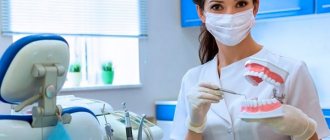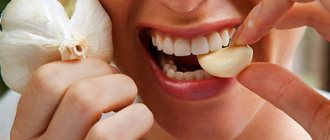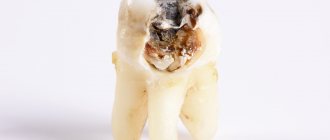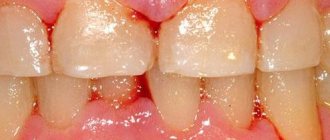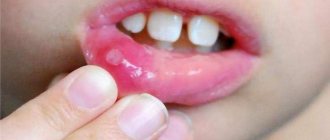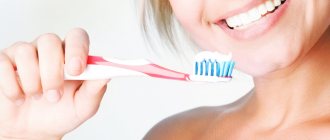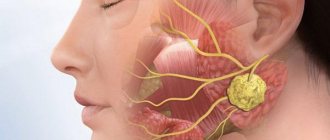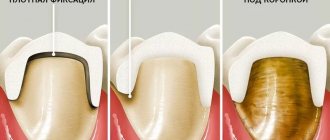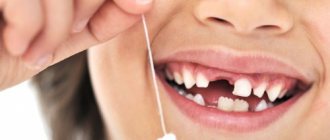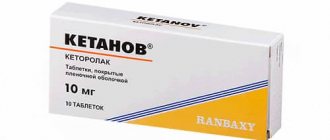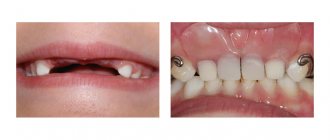Content
- When to remove a tooth
- What is recommended to do
- Stages
- What to do after deletion
- Remove wisdom tooth
- Prevention
- Final recommendations
PROMOTION
Inexpensive tooth extraction
from 500 rub. — 2500 rub.
Tooth extraction at home is an unsafe event, as there is a high risk of infection. But there are situations in life when it is not possible to seek qualified help. Is it possible to pull out a tooth yourself and avoid complications?
How to quickly pull a tooth without pain
Removal (extraction) is a surgical operation that must be performed by a dentist. But there are times when it is not possible to see a doctor. Children's milk units have longer and thinner roots than permanent ones, the walls of the alveolar process are less strong, so you can remove a non-permanent tooth at home.
Temporary units are involved in the formation of correct bite; the health of permanent teeth depends on their condition. Therefore, it is not recommended to remove them ahead of time, but it is also not recommended to start diseases. How can you quickly extract a baby tooth for a small child at home and without pain?
When should I delete it?
Indications for removal of baby teeth:
- It wobbles a lot.
- Damage to caries, destruction of the crown.
- Inflammation of periodontal tissues.
- A new unit has already begun to emerge nearby.
- Flux or fistula on the gum.
- Delayed root resorption.
- Cyst at the apex of the roots.
- Pulpitis, periodontitis.
- Crown fracture.
Removal of baby teeth in children is most often performed without anesthesia and without pain, since the alveolar walls are thin, the loosened unit is easily removed: the main indications for the use of anesthesia are pulpitis, periodontitis.
Home removal methods
How to pull out a tooth at home? Most often, the child independently loosens it with his tongue or fingers, and it falls out on its own. Eating solid foods helps in the removal: apples, carrots, crackers, toffee candies. But if a baby tooth is loose for a long time and does not fall out, the baby needs to be helped to pull out such a tooth at home.
Pre-feed the child and carry out hygienic cleaning of the oral cavity, rinse the mouth thoroughly with a disinfectant. You can use nylon thread or sterile gauze. Prepare an antiseptic (Chlorhexidine), treat your hands and tools.
How to pull out (remove) a front baby tooth yourself and painlessly at home? If it is very loose and tilts freely in different directions, tie a thread to the base of the crown and pull it sharply upward. You cannot pull to the side, you can damage the gums, the roots can break off and remain in the hole.
How can you loosen and pull out a child’s baby tooth without pain at home? Apply sterile gauze and pinch tightly with your fingers.
The front upper units have a cone-shaped root, so you need to make rotational movements and swing from the lip to the palate.
The roots of the lower incisors are thin and flattened; they are loosened from the lip to the tongue. When the unit becomes mobile, it is removed from the hole.
Removal at the dentist
The child’s baby tooth is very loose, his gums are inflamed, his temperature has risen, his cheek is swollen, what should I do? In such cases, you should definitely visit a doctor. The presence of an inflammatory process can lead to the death of the primordia of permanent units, so the surgical procedure must be performed by a professional. Special children's tools are used to loosen and remove the unit.
How to pull out a tooth without pain? Modern painkillers are application, conduction, infiltration and general. The doctor selects the most suitable remedy so that the child does not experience any discomfort.
The main features of tooth extraction in children are associated with the presence of the rudiments of permanent units, structural features of the jaw, and mixed taste. The structure of the roots and the thickness of the alveolar walls differ. Dentists know how to pull out a baby tooth so as not to damage the gums, neighboring units, and permanent buds. After removal, the hole is inspected so that no root fragments remain.
Does it hurt to remove?
Is it painful to remove a child’s baby tooth without anesthesia? If the unit is very wobbly, the baby is not afraid, does not resist, then this procedure does not cause pain. Therefore, try to calm the child so that he does not fidget or cry.
Is it painful to have a baby tooth pulled out at the dentist? The procedure is performed under local anesthesia using special short needles. The child will not feel pain. The method of pain relief depends on the patient’s age, his psycho-emotional state, and the degree of caries damage.
Removing permanent units in children
- Advanced caries.
- Crown or root injury.
- Periodontitis, mobility of the affected unit.
- Sometimes removal of some units is performed in case of crowding to restore the bite.
How to pull out a tooth without pain? The operation must be performed by a pediatric dental surgeon. Injection anesthesia and special forceps are used.
How can you remove a permanent tooth at home without pain? You cannot tear out such units yourself. They have formed roots and adhere firmly to the gums. It will not be possible to carry out the procedure painlessly; this will lead to the development of complications and gum injury.
It happens that during adolescence, wisdom teeth (third chewing molars) begin to emerge. Most often they grow in the wrong direction and destroy neighboring units and disrupt the bite.
In such cases, they should be disposed of. Removal of wisdom molars in adolescents is less traumatic than in older age.
This is due to the fact that their roots are not yet fully formed.
How can you painlessly extract a wisdom tooth? The extraction is performed by the dentist under anesthesia, so the patient will not feel pain. Unpleasant sensations may occur after the procedure when the medicine stops working. You can take a painkiller tablet.
How can you remove a wisdom tooth at home? You cannot pull out a wisdom tooth on your own. This area contains a large number of nerve endings and blood vessels that can be damaged. In addition, the pain will be simply unbearable. Hidden (impacted) wisdom molars need to be drilled out of the bone tissue; this can only be done by a doctor.
Hole care
- After a child has had a loose baby tooth removed, place a piece of cotton wool or gauze on the hole and ask the baby to bite it a little. You need to keep the tampon for no more than 20 minutes.
- You cannot eat for 2 - 3 hours after the procedure.
- Do not give your child a hot bath on this day.
- Do not allow anyone to pick the hole with your tongue or any objects.
- Maintain good oral hygiene. You need to rinse after every meal.
If, after removing a baby tooth at home, you experience prolonged bleeding, inflammation of the socket, swelling on the cheek, or fever, you should contact a pediatric dentist. These are signs of complications.
Source: https://www.vzdorovomtele.ru/za-za-chego-boljat-zuby/kak-bystro-vydernut-zub-bez-boli.html
When Removal is Required
Doctors recommend removal if:
- The tooth is destroyed to such an extent that filling will not solve the problem;
- With exacerbation of osteomyelitis;
- In the inflammatory process associated with infection;
- With advanced periodontitis;
- If the tooth is positioned incorrectly;
- If the jaw is damaged;
- With severe looseness;
- If a dental unit interferes with prosthetics;
- With severe caries damage.
There are rules to minimize the consequences of self-removal of a problematic tooth.
How the removal process occurs (video)
Before removing a diseased tooth, the doctor must take an x-ray to determine the location of the roots. Removal takes place with an anesthetic injection.
The doctor carefully separates the gum, grabs the tooth with forceps and begins to pull it out, rocking or twisting it, depending on the number of roots. After this, you can pull the tooth out of the alveoli. Removing the lower and upper teeth is not much different; the upper molars are somewhat more difficult to grasp correctly.
In more advanced cases, the doctor can divide the dental crown into pieces using a drill and tear them apart. This method helps protect the jaw from damage.
When removing an impacted tooth or root fragments, it is first necessary to cut the mucous membrane, free access to the dental crown, and then begin pulling out. This complex removal is often performed under general anesthesia.
Removal of an impacted tooth
Removal of a molar tooth with a cyst requires a highly qualified dental surgeon and is performed under both local and general anesthesia.
Two days after removal, it is necessary to examine the patient and do a control x-ray to exclude the presence of “forgotten” root fragments in the jaw.
Preparatory stage
To reduce risks as much as possible, you must:
- Brush your teeth;
- Rinse your mouth with balm, calendula tincture or chlorhexidine.
- Take a painkiller and wait half an hour.
Prepare:
- Antiseptics;
- Spitting container;
- Tampons and sterile gauze pads;
- Mirror.
The use of pliers and similar tools is prohibited.
Sequence of actions if you need to pull out a tooth at home:
- Cover the tooth with sterile gauze, grasp it tightly and slowly loosen it to remove it from the socket;
- Use tampons to remove accumulated blood;
- Act slowly and forcefully so that no root fragments remain in the hole;
- After extracting the tooth, apply a tampon to the wound and bite it firmly;
- After half an hour, carefully remove the tampon so as not to provoke bleeding.
Do not drink or eat for the next 4 hours. Apply cooling compresses for several minutes. In the next few days, eliminate bad habits and do not use physical activity.
How to remove a molar yourself
It is worth mentioning that self-removal of teeth requires considerable physical effort. Therefore, if there is an opportunity to ask someone stronger to tear out the “object of your torment,” it is better to take advantage of it. In addition, home dentistry requires time and patience.
Before you remove the “source of discomfort” yourself, you need to perform all the steps indicated earlier. In addition to the oral cavity and instruments, the hands of the person who will pull out the tooth also need disinfection. To be on the safe side, it is better to use sterile gloves.
After a preliminary examination and treatment, an ice cube is applied to the molar tooth and gum. This action allows you to slightly numb the treated area without the use of anesthetics. After freezing, you need to grab the problem tooth with your fingers and loosen it from side to side. This must be done extremely carefully so as not to accidentally break the root. In the case of chewing units, you will have to put in a little more effort, since they have several roots.
As soon as the person performing the operation feels that the tooth is loose, you need to pull it with a sharp and strong jerk. This moment may be painful, but it will not last longer than 3 seconds. Sterile cotton wool or a bandage is applied to the resulting hole in the gum. If the bleeding does not stop after 30 minutes, then you should replace the tampon with another one and leave it for an hour.
Cold will help relieve pain a little for the first time after surgery. To do this, apply a piece of bandage with ice to the wound for no more than 10 minutes.
Thread
In the case of an already loose tooth, you can try the well-known method - wrap a thread around the object to be removed and pull it. Under no circumstances should the fiber be allowed to stretch at any angle other than 90 degrees. Otherwise, the risk of gum damage increases.
Actions after removal
It is necessary to monitor the patient's condition for several days.
Negative manifestations if:
- The wound bleeds an hour after removal;
- There is clouding of consciousness;
- The person has a fever;
- The pain has become pulsating in nature - an urgent examination by a dentist is necessary, as a jaw injury is possible.
The difference in how to pull out a molar at home or a baby tooth is only in the length of the roots. To minimize negative consequences, it is necessary to work in gloves treated with an antiseptic composition.
How to tie a thread to a tooth to pull it out
Is it really possible to pull out a tooth the old fashioned way - with thread? Is the process tolerable? It depends on what tooth we are talking about.
If you are talking about a baby tooth that barely stays in the gum, then yes, you can do it the old fashioned way)
If we are talking about an adult and teeth that have already acquired roots, then pulling out a tooth with a thread and a door is out of the question. This is simply impossible.
So, if we are talking about an adult and root teeth, then you should definitely go to the doctor and remove the tooth as expected, with pain relief and normal removal tools.
It also happens that you just need to touch it with your finger and the tooth almost falls out on its own and there is no pain at all, but try to pull out the “eight”, which is also called a wisdom tooth, and it’s unlikely to work.
Not only will it be very difficult, if not impossible, to hook it due to its inaccessibility, but it also sits quite firmly and some dentists prefer not to bother with it and do not even try to rip it out like other teeth, but immediately send it for surgery .
This is interesting: The drug Dentokind: instructions for use for children up to one year old and after teething
So, in this case, it all depends on the circumstances and each case is individual, because sometimes it is easier to break your neck trying to pull out a tooth than to part with the tooth itself in this way.
How to pull out a tooth?
Everyone knows that a dentist should take care of your teeth, and everyone also knows about visiting him twice a year. However, despite the fact that today nothing can be treated without anesthesia, many of us are still afraid to go to the dentist. Well, if everything seems to be clear with treatment, there’s no way you can handle it on your own, but with teeth pulling it’s much more complicated.
Almost everyone is afraid to have teeth removed, especially children, who, due to their age, have to undergo the procedure of removing baby teeth quite often. Many parents are wondering how to pull out a baby tooth without hurting the child?
Baby tooth
History knows many ways to extract a tooth from a child. In many countries, special ceremonies are dedicated to the loss of the first baby tooth. We know about the tooth fairy, who exchanges lost teeth for coins, about the fact that a tooth must be given to a mouse or a dog so that the permanent teeth are healthy, and so on.
Indications for the procedure
Dentists try to preserve every unit in the oral cavity (with the exception of wisdom teeth) to the last. Unfortunately, saving teeth is not possible in all cases. Among the indications for extraction of elements from the oral cavity are:
- loosening of the unit or its excessive mobility;
- destruction of more than 2/3 of the crown;
- supernumerary units that interfere with full prosthetics;
- purulent processes in the root system of teeth.
It is prohibited to remove units yourself if the following symptoms are present: fever, swelling of the cheek, inflammation in the oral cavity, severe destruction of the crown.
Preparatory activities
Preparation for safe extraction of the affected unit from the oral cavity includes 4 preparatory stages:
- Moral attitude. It is necessary to realistically assess your capabilities regarding the manipulation. You can remove yourself only those units that are wobbly. If the tooth sits firmly in the gum, then it is better to seek help from a dentist or surgeon.
- Carrying out thorough oral hygiene. Before the procedure, be sure to brush your teeth with toothpaste, a brush and treat the oral cavity with an antiseptic balm. Suitable medications can be purchased at a pharmacy. When choosing a mouthwash, preference should be given to those that contain alcohol.
- Taking painkillers. A tablet taken 30-40 minutes before manipulation will reduce the severity of discomfort. Before using the drug, it is advisable to read the instructions for its use and possible side effects.
- Place gauze on the problematic element.
Before removing teeth yourself, it is important to prepare all the necessary equipment:
- container for removing saliva that appears during manipulations;
- antiseptic solutions;
- tampons and gauze wipes;
- mirror for beams of visualization of the working area.
Before removing a tooth in the clinic, the surgeon performs local anesthesia of the working area using an injection. Anesthesia is carried out with a powerful analgesic with injection of the problem area from several sides. The drug begins to act 10 minutes after injection.
Local anesthetics and gels with anti-inflammatory effects are not used for pain relief. After eliminating the problematic element, drug components can penetrate into the tooth socket and cause an inflammatory process or increase the risk of its suppuration
At home, a person without special knowledge and skills will not be able to competently perform anesthesia.
In this case, it is recommended to use one of the most powerful non-narcotic drugs - Ketarol or Ketanov. The drugs partially block the transmission of pain impulses entering the brain.
However, oral administration of tablets cannot compare with the effect of professional pain relief.
Removal technique at home
Sometimes it is difficult for a person to determine on his own which of the units causes discomfort. This is due to the fact that toothache can radiate to neighboring areas and spread to half of the jaw.
The procedure for extracting problem teeth at home includes:
- Thorough hand washing with soap.
- Apply a gauze pad soaked in an antiseptic to the problem area.
- Loosening of the tooth in different directions with its simultaneous upward movement. A tooth can only be pulled out of its socket using a systematic loosening technique.
It is powerful to pull a tooth out of its socket only with the help of a systematic loosening technique.
There is another way to deal with the problem - pull out the tooth with floss. To do this, you need to take 20-30 cm of thread and tie it to the base of the problem tooth. The thread must be tight enough, otherwise it will come off during sudden movements.
Do not use doors or other foreign objects while using the thread. The rope should not come into contact with the soft tissues of the mouth, otherwise damage to the latter may occur. The floss method is more commonly used to remove loose baby teeth.
Blood that appears during the procedure must be spat into a previously prepared container. After the manipulations, the mouth is rinsed with an antiseptic. There should be no remains of blood or pieces of tooth left in the cavity. After self-extraction of the unit, it is not recommended to eat or drink for 2 hours.
It is advisable to apply a cold compress to the problematic side (to relieve swelling of the soft tissues). Cold also minimizes the risk of infection of the hole after manipulation. Smoking and consuming alcoholic beverages are prohibited for 5-6 hours after the procedure. It is not advisable to give the body excessive physical activity during the day.
It is not possible to pull out a tooth painlessly. Without a professional procedure, it is almost impossible to completely stop pain impulses in the brain.
There are several recommendations that a person should consider when getting rid of a tooth on their own:
If the procedure could not be completed on your own, you should urgently contact a surgeon. If providing urgent professional help is not possible, then you should take a painkiller tablet and minimize the chewing load on the problem area of the jaw.
After successful completion of the manipulations, you should monitor the condition of the hole throughout the week. Pain and suppuration at the site of the removed unit is a reason to contact the dentist. Before visiting a doctor, the painful area should be treated with antiseptic agents (Chlorophyllipt, Miramistin).
Features of milk element extraction
It is easier to pull out a baby tooth than the root elements. This is due to its fragile root system and small size. Often children's teeth fall out without pain due to drying out of the roots or germination of a permanent unit.
If the unit sits tightly in the hole, then you can resort to the following algorithm for pulling out a baby tooth:
- Inspect the element and assess the possibility of independently removing it from its place. Adults should evaluate the child’s tooth mobility and its visual differences from other units in the series. It is also necessary to ask the child about the pain of the element. It is prohibited to pull out a baby tooth at home if there are soft tissue swellings or abscesses near it. In this case, you need to show the patient to a pediatric dentist.
- Pay special attention to pain relief. They are usually not used when removing milk units. If it is painful for a child to press on a tooth, then it will not be possible to do without tablets. In this case, it is necessary to select the drug that is suitable for the child’s age.
This is interesting: Bad breath in a child: causes, symptoms and remedies
It is important that the child remains calm during the tooth extraction. Otherwise, parents will need to seek help from a dentist.
If a child allows a tooth to be pulled out, then first a piece of gauze moistened with an antiseptic should be placed on the problem unit. After this, the adult should quickly pull the baby tooth upward. Sudden movements often frighten children, but cause them less discomfort during the procedure. You can pull out a child’s tooth at home only if the tooth is loose.
Hard foods, such as apples and carrots, can loosen baby teeth (especially incisors and canines). In this case, you need to make sure that the child does not swallow the dropped element. After the procedure, the wound is thoroughly treated with an antiseptic. To normalize the child's moral state, one-time use of sedatives is allowed.
To eliminate bleeding after removing a baby tooth, use a gauze pad. The tampon is removed after the bleeding has completely stopped. If the tooth extraction procedure is carried out correctly, the regeneration of the hole will occur the next day. If after a few days the baby experiences redness and pus at the site of the removed unit, he should be shown to a doctor.
Molar
How to pull out a molar tooth? With molars everything is more complicated. You can't remove them with thread. In the old days, however, various methods of removing teeth were practiced, but this was due to the banal lack of dentists. Today, teeth are removed by a surgeon in a dental clinic.
- So you go to the doctor. The dentist examines your teeth, and if you need extraction, he gives an injection with an anesthetic, after asking if you are allergic to the drugs.
- When the anesthesia takes effect, the doctor will remove the tooth with a special tool. This procedure usually takes a little time. If necessary, they may order an x-ray to make sure there are no fragments left.
- After the tooth is pulled out, a tampon is placed on the socket, which you must hold in your mouth, clamped with your teeth, for some time (usually about half an hour) to avoid bleeding.
- The main thing you should know after tooth extraction is that you should never rinse your mouth. Your doctor should warn you about this.
- The hole after tooth extraction heals and tightens in about 2-3 weeks.
- If after the operation you have some troubles: fever, abscesses, pain, and so on, then you should not self-medicate and wait for everything to go away on its own, you need to urgently go to the dentist, who will look at what your problem is and how to solve it .
Thus, you must solve the question of how to pull out a tooth competently. It is best, of course, to see a doctor, but if this tooth is a baby tooth, then you can, in principle, cope on your own, but still, be careful so that there are no complications.
Have your child wash their hands thoroughly with antibacterial soap to remove as many germs as possible before they put their fingers in their mouth. Now he is ready to start trying to pull out the loose tooth.
Rock the tooth back and forth. Do this until it is as loose as possible to painlessly extract the baby tooth.
Try pulling the tooth up with your fingers. If it refuses to come out, repeat step 2. If the tooth is well loosened, you should be able to pull out the baby tooth without any problems.
Try eating an apple with a loose tooth. Sometimes it helps.
If your child is in pain, wait until the tooth becomes more loose or let time take care of it—when the tooth is ready to fall out, it will.
Press a towel or gauze pad against the bleeding gum as you pull the tooth to stop the bleeding. Tilt your child forward slightly to prevent him from swallowing blood, which can cause stomach upset.
Features of wisdom teeth removal
Wisdom teeth are considered the most problematic units. They are difficult to treat and remove. Often the process of the emergence of eighth molars on the gum surface is accompanied by pain.
Wisdom teeth are more susceptible to caries due to the excessive fragility of the enamel and the difficulty of caring for them. Eights are located at the end of the row, and it is difficult to clean them properly
It is not recommended to pull figure eights on yourself, since the procedure is associated with a high risk of side effects. There is only one indication for preserving the figure eight – its correct eruption and the absence of pressure on neighboring teeth.
If the problematic tooth is loose, but it is not possible to pull it out in a dental clinic in the near future (due to weekends, the patient’s remote location from civilization or night time), then you can try to get rid of the molar at home.
Inflammation of the socket after tooth extraction and its treatment
Wisdom tooth removal occurs according to the following algorithm:
- hand disinfection;
- assessing the possibility of self-extraction of a unit;
- high-quality cleaning of teeth from plaque and food debris;
- treatment of the oral cavity with balms or chamomile decoction;
- placing a swab soaked in antiseptic into the tooth socket.
It is impossible to rip out a retreated (unerupted) third molar on your own. The procedure can only be performed by a dentist. In this case, the patient can be prescribed various intervention schemes (depending on the complexity of the clinical case) under local or general anesthesia. After a complex operation, a person is usually prescribed anesthetics for 3-5 days.
Disinfection of the hole, possible complications
To stop bleeding, use a gauze swab soaked in hydrogen peroxide or a non-impregnated napkin. Gauze is placed into the hole and pressed well with your teeth. Ice is applied to the outside of the cheek to relieve swelling. Additionally, they take anti-inflammatory painkillers: Ibuprofen, Ketanov, Nise.
The gauze swab is held in the mouth and then spat out. It is important that a protective clot forms at the site of the removed element, which will protect the hole from infection. In the first 24 hours, it is not recommended to actively rinse the problem area to avoid washing out the clot.
For 2-3 days after the procedure, it is allowed to make oral baths with herbal decoctions or purchased solutions. The antibacterial agent is taken into the mouth and left for 2-3 minutes.
Among the main complications after wisdom tooth removal it is worth noting:
- heavy bleeding;
- the probability of leaving a fragment of an element in the hole;
- alveolitis (infection of the hole at the site of the torn unit).
You can effectively stop bleeding with the help of special medications, but only a dentist can prescribe medications in this case. At home, to stop bleeding, it is better to use local agents: hydrogen peroxide, fibrin film, hemostatic sponge.
This is interesting: Treatment of baby teeth in children: how to treat a child, video from dentists
Infectious complications usually occur 3-5 days after self-extraction of a tooth. They manifest themselves with the following symptoms:
- swelling of the cheeks, increasing every day;
- increased discomfort in the jaw;
- sore throat when swallowing saliva;
- bad breath;
- general deterioration of condition;
- temperature rise.
If a person does not respond to these symptoms, there will be a high probability of developing side effects: abscess and cellulitis.
The latter disorder is associated with the spread of the inflammatory process to an unlimited area of the oral mucosa. Treatment of the presented disorders cannot be carried out at home.
It can be fatal, especially if the problem area is heated and attempts are made to squeeze out the abscess.
Treatment of abscess and cellulitis should be carried out by a surgeon and dentist. The doctor develops a comprehensive treatment regimen: using surgery, medications and physiotherapeutic procedures.
Home tooth extraction may not be 100% safe. The procedure is performed only if it is not possible to urgently see a doctor and the situation becomes critical. The correct tactics for eliminating the problem will minimize the negative consequences after manipulation. It is best to entrust the selection of a suitable anesthetic agent and the procedure itself to a doctor.
Wisdom tooth removal
If pulling out a baby tooth at home is not a particular problem, then with a wisdom tooth things are different. This dental unit can be removed only if it can be firmly grasped and loosened. Cutting the gum is prohibited so as not to damage the nerve of the lower jaw. For convenience, you need to place a tampon between your gum and cheek. “Eights” have longer roots, so independent removal is almost impossible. This procedure must be performed in a specialized institution.
When it is prohibited for an adult or child to pull out a tooth at home:
- If the gums are very swollen and there is no way to act carefully;
- With purulent abscess, with gumboil;
- If a person has a fever;
- If the tooth is crumbled;
- With excessive sensitivity.
How to pull out a tooth at home: molar and milk
Sometimes it is not possible to visit a dentist and then the question arises of how to pull out a tooth at home. Usually this is resorted to by parents of children whose baby teeth are so loose that it’s time for them to fall out, but they stubbornly do not want to leave their place. But it happens that you have to get rid of the indigenous ones in this way.
There are several reasons for this effect of teeth, the main ones being the change of milk teeth to permanent ones, and gum disease at the last stage. Of course, if possible, you need to contact a specialist, because in order to quickly remove a tooth yourself, you need sterile conditions and an exact understanding of what to do.
Removal of baby teeth
The advantage of a baby tooth is that it does not have deep roots that cling to bone tissue. It is easier to pull it out provided that it is already very wobbly. If it holds tightly, then it is necessary to help the process of loosening reach its natural completion, since if it is pulled out ahead of time, the following troubles can occur:
- there will be pain and injury to the gums;
- the indigenous one in place of this dairy may grow uneven.
It is quite possible for a child to pull out a tooth at home without pain. But there are a number of conditions so that this process does not cause other violations. The main one is sterility. Therefore, certain preparation for removal is necessary:
- Before tearing out, feed the child, since after this it is forbidden to eat for at least 2 hours;
- Rinse his mouth well and remove all remaining food from it.
Before removal, you need to thoroughly clean your mouth.
Be sure to remove any remaining food first. If they get into the wound, an inflammatory process may begin, since it is not protected from the penetration of bacteria. More often, this condition resembles alveolitis in adults. If the tooth wobbles too much, you can pull it out with your hands. You can loosen it with your tongue or clean hands.
If you are unsure that you can do everything correctly, contact your pediatric dentist. Trying to save a small amount on his services is not worth the child’s health.
How to pull it out with a thread
Even our mothers and grandmothers told how they used to pull out a tooth using floss. Be that as it may, the popular fictional method of tying a thread to a doorknob should not be used.
It is necessary to attach the floss to the tooth and pull it with a sharp movement. You should not pull to the side, as this will damage your gums or cheek. Initially, you need to make sure that the thread does not come into contact with the skin. Otherwise, mechanical injuries due to friction will occur. The thread itself should be silk.
The video shows a way to pull out a tooth with a thread:
https://www..com/watch?v=dLClLuNKldo
The easiest way
You don't have to pull out a tooth if it's already loose enough. Let your child chew on an apple, pear or cracker. The tooth will not bear the chewing load and will fall out on its own. This method does not cause pain or preliminary anxiety in the child. After all, with a baby it is so important to calm him down, but in the case of a thread this will not work.
If parents decide to pull out a tooth on their own, then they should distract the child from this process. You can turn on cartoons or tell him an interesting and exciting story.
How to remove molars
If there is a need to pull out a permanent tooth at home, then you cannot do without pain. Its roots go deep and cling to the jaw. In the modern world, only in the presence of a disease such as periodontal disease in a chronically advanced stage can the incisors become loose and fall out on their own.
There are cases when people tried to literally tear them out with pliers. But this method is extremely dangerous.
In addition to the fact that a person can seriously injure himself and leave fragments in the gums, there is also a risk of infection entering the resulting wounds. And damaged enamel of neighboring teeth will lead to their subsequent destruction. If inflammation develops, you will have to be treated in a hospital or recover in intensive care.
You can painlessly and safely extract a molar tooth only in the dentist’s office. He will administer preliminary local anesthesia. And then, using special tools, he will extract the bone element without leaving root fragments.
If a person somehow incomprehensibly managed to independently pull out a tooth at home, then after that it is necessary to perform the following steps:
- Do not eat or drink for 3 hours.
- Do not visit the baths for two days, do not take hot baths. Even active sports are prohibited.
- Smoking and alcohol are also prohibited for the next two days.
- As soon as the removal is completed, apply a cold compress to your cheek, so the pain will become a little duller and a hematoma will not develop.
- Be sure to go to the dentist and get an x-ray to make sure there are no tooth parts left in the socket.
It is much easier to remove a loose incisor yourself than, for example, a fang. Before removing a tooth, you should take a painkiller, for example, Tempalgin.
Tempalgin
After this, loosen the bone process with your fingers. Fold the gauze several times and wrap it around the tooth to be removed and pull sharply. If you cannot carry out this procedure yourself, contact your dentist.
Eights do not break out on their own under any circumstances. This is due to their deep, twisted roots. Often they are located so deep that even a dentist has difficulty coping with this task.
When pulling out on your own, you should also know that a hole with blood will form at the site of the wound. The clot should not be removed as it will block bleeding. Therefore, you should not rinse your mouth for 24 hours after pulling it out.
Blood clot in the socket
Possible complications
Before extracting a molar tooth at home, you should find out about the possible complications of this procedure:
- Neighboring incisors may be damaged, which will lead to problems with them. Injury to the gums threatens the development of an inflammatory process.
- The remaining fragments inside the wound due to poor removal will lead to inflammation. If the root is not completely pulled out, it will begin to fester, which without timely medical care can lead to death .
- A poorly treated wound threatens the onset of inflammation. In this case, it will not be possible to remove the tooth at home easily and without complications.
If you treat a wound poorly, inflammation like this can begin in it.
All these consequences will still bring a person to the dentist's office. In addition, an implant must be installed in place of the extracted tooth. This procedure must be carried out as quickly as possible. This is due to the fact that over time the dentition will change its location and the gums will recede. Selecting and installing an implant will be more difficult and expensive.
Causes of loosening
Even if a person knows how to correctly pull out a tooth himself, this procedure is performed extremely rarely, unless the tooth is already very loose. But even in this case, it is better to try to strengthen such a tooth before finding out how you can pull it out without consequences. If you consult a doctor with this question, he will be able to diagnose the disease and take measures to treat it.
A tooth can become loose due to the following reasons:
- gingivitis;
- periodontitis;
- mechanical injury;
- lack of vitamin D in the body;
- hormonal disorders;
- diabetes;
- pregnancy;
- the period of menopause.
Gingivitis Periodontitis Skol
Usually the incisors become loose; the molars are extremely rare.
Thus, we can conclude that self-removal of baby teeth is acceptable, but that of primary teeth is not, since this can have a lot of negative consequences. It is easier and more expedient to contact a dentist, especially since if you have a medical insurance policy, the entire procedure will be performed free of charge.
Source: https://zub.dental/udalenie/vyrvat-zub
Prevention of complications
The difficulty of the procedure is to avoid infection, since if microbes enter, complications will affect the entire oral cavity. To speed up wound healing, you need:
- When talking, try not to touch the hole;
- Monitor the integrity of the blood clot, which performs a protective function;
- For the first 4 hours after removal, do not eat, chew on the healthy side;
- Brush your teeth carefully and thoroughly, avoiding the socket so as not to damage the blood clot;
- Include food with plenty of liquid in the menu;
- Avoid cold and hot dishes;
- After eating, rinse your mouth with clean water or furatsilin solution to neutralize oozing blood;
- Apply warm, damp compresses to stimulate blood circulation.
Swelling may occur immediately after removal. If pain and swelling disappear within a few days, it means healing is proceeding normally.
Reasons for changing baby teeth to molars
The cutting of temporary “pearls” begins when the baby is six months old. This process will be completed in approximately three years. During this time, the child will acquire twenty snow-white teeth. But as soon as parents get used to the baby’s snow-white smile, a new process begins. From about 4 years of age, the temporary ones begin to loosen and fall out, and the root ones begin to “peck” out. The process of replacing teeth occurs for very logical reasons:
- The child's jaw is not large enough for permanent teeth to grow immediately.
- The bones of the skull finally grow only at the age of 18. If there were only permanent teeth in the jaw, they would have large gaps between them, and chewing food would be difficult.
- Baby teeth give time for the primary teeth to develop and grow.
Temporary incisors, canines and molars begin to loosen at the moment when they are pushed out by their growing permanent “brothers”. This process lasts about two years.
Methods for loosening and removing baby teeth
Before they fall out, temporary teeth become loose for a long time. The baby's parents can speed up this process and help the baby remove the tooth without pain at home. To do this, moms or dads can use one of the following methods:
- natural;
- "help yourself";
- third party intervention.
Let's consider each of the methods separately.
Natural. This is an easy way to quickly loosen a temporary incisor, molar or canine tooth. Parents should buy plenty of fresh fruits and vegetables, depending on the child's preferences. After each meal, the baby needs to eat a choice: an apple, carrots, cucumber, raw potato or any hard fruit.
It is important that fruits or vegetables are not boiled or very soft
This method will give results within a week, maximum two. The baby tooth will fall out without pain, and a permanent tooth will begin to emerge in its place.
"Help yourself". The child needs to use his tongue to move the loose tooth back and forth. The task of parents is to show by example and tell how to perform manipulations correctly and what not to do. Prohibited:
- Loosening a tooth by moving your tongue left and right can lead to injury and pain.
- Do not loosen the tooth with your fingers, as this can cause infection.
- Do not use foreign objects: tweezers, clamps, grips, etc. They can do a lot of harm.
Third party intervention. Sometimes, for some reason, a child cannot loosen a tooth on his own. In this case, parents should come to the rescue. The instructions for this manipulation are as follows:
- take a clean gauze pad;
- moisten it with a solution of chlorhexidine or any antiseptic that does not contain alcohol;
- ask the child to open his mouth;
- grab the tooth with a clean napkin;
- Gently move the loose tooth back and forth for a minute twice a day.
During the manipulation, make sure that the child does not experience pain.
First aid after tooth loss
After a baby tooth leaves a child's jaw, a dimple forms in its place, which may bleed a little. In this case it is necessary:
- Rinse the child's mouth with an antiseptic.
- Check the place where the tooth was - milk roots could remain there.
- Place a clean piece of gauze in the hole and ask the child to bite it (the procedure stops the bleeding).
- Do not let your baby eat for one hour; during the first meal, do not offer spicy, salty or sour foods.
If the bleeding cannot be stopped within 20 minutes, or a piece of bone tissue from a temporary tooth remains in the gum, you should immediately consult a dentist.
After the physical manipulations have been carried out, parents should worry about the psychological health of the baby. To do this you need:
- Have a conversation about how the process of changing teeth is natural. If baby teeth fall out, it means the child is growing up.
- Come up with a ritual of exchanging a dropped “pearl” for something pleasant. For example, money or sweets.
- Do not tease your child by calling him toothless or ugly.
Experts recommend performing all of the above steps every time after a canine, molar or incisor falls out.
The last baby tooth should fall out by age 12. If the parents performed all the manipulations correctly, the reward will be the baby’s strong physical and psychological health.
What to do if the tooth is almost not loose
Often a canine, incisor or molar hurts greatly, but “sits firmly in its place.” Is it possible to pull out a tooth yourself if it practically does not move? Doctors do not advise carrying out dangerous experiments: an attempt to loosen the affected unit and remove it without the help of a dentist can lead to serious complications.
Read also: Can I eat after tooth extraction?
Consequences of unprofessional actions:
- a piece has broken off from the tooth or the problematic unit has broken at the root;
- pain shock without potent drugs;
- penetration of infection, including deep to the jaw bone;
- severe bleeding after extraction of a unit of dentition;
- a sharp increase in pressure against the background of acute pain and anxiety;
- inflammatory process in the socket (alveolitis);
- injury to oral tissues from non-professional medical instruments or fragments.
To alleviate suffering, you can take a Ketanov tablet (1 piece is enough for 5-8 hours) or apply a local anesthetic to the gum near the tooth: anesthetic drops, Kamistad gel and Kamident with lidocaine.
The best way to remove a piece of teeth that is loose or painful is to consult a dentist. If an adult decides to independently perform a “mini-operation” on himself or a child at home, then you need to find out more details on how to pull out a tooth without complications and pain.
